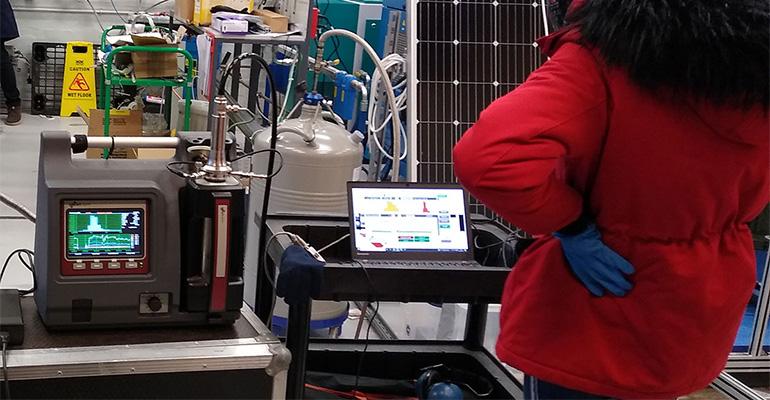PMW Technology is a UK-based company founded by its MD Paul Wilson, an engineer by trade who has experience in energy efficiency and decarbonisation projects in the energy sector said that the storage of liquefied CO2 means less weight and less space decreasing the amount of cargo sacrifice necessary.
According to Wilson the most prevalent CCS system uses a cocktail of chemicals, including amines, and has a significant cargo space sacrifice and a significant increase in fuel consumption, with a 20-metre column compared to PMW Technolgy’s A3C system that achieves similar results with a 200mm separation bed.
On all three counts Wilson believes that PMW Technology’s A3C system will not only out-perform conventional CCS technologies, but also offer shipping lines pure grade CO2 that can be used in industrial processes, including food production, offsetting some of the cost.
Wilson told Container News: CO2 is selling at $300/tonne at the moment, prices had reached over $370/tonne in June 2022, after the invasion of Ukraine by Russia, in February last year.
The A3C system works by washing out sulphur oxides and cooling the washed gas. Then a second stage of cooling and separation of the carbon gas uses stainless steel beads to capture the gas.
“Our equipment captures a high percentage of the CO2 in exhaust gases. We have demonstrated that our equipment can capture over 99% of the CO2 in an exhaust gas,” explained Wlson.
As the A3C system is modular it can cater for capturing as little as 2,000tonnes of carbon annually up to the largest maritime engines, of all types using any fuel, making the system extremely flexible.
In addition, Wilson points out that the “Energy consumption of the system is considerably lower than comparable systems, which means less CO2 is produced requiring a smaller storage space, as well as producing food grade carbon that has no toxic refrigerant to contaminate it.”
Effectively the system offers a low capital expenditure and a low operating cost with “significantly less cargo sacrifice of around 6-7%, around 700 slots, on a 10,000 teu vessel on the transpacific trade, steaming at around 20knts.”
On a trade such as Asia to Europe there are more stops so any carbon stored could be offloaded during the cargo handling process.
“We still don’t know what the fuel of the future will be, so we need to clean up the existing fleet,” noted Wilson.
According to Wilson a recent DNV report suggested that the major considerations for CCS systems are the cost associated with cargo sacrifice and the costs for additional fuel consumption.
DNV reported that any fuel cost above 15% would be prohibitive while the cost of storage at less than $40/tonne would also make a CCS system viable. Wilson said that the A3C meets both of these Criteria.
Copyright © 2024. All rights reserved. Seatrade, a trading name of Informa Markets (UK) Limited.
Add Seatrade Maritime News to your Google News feed.  |

